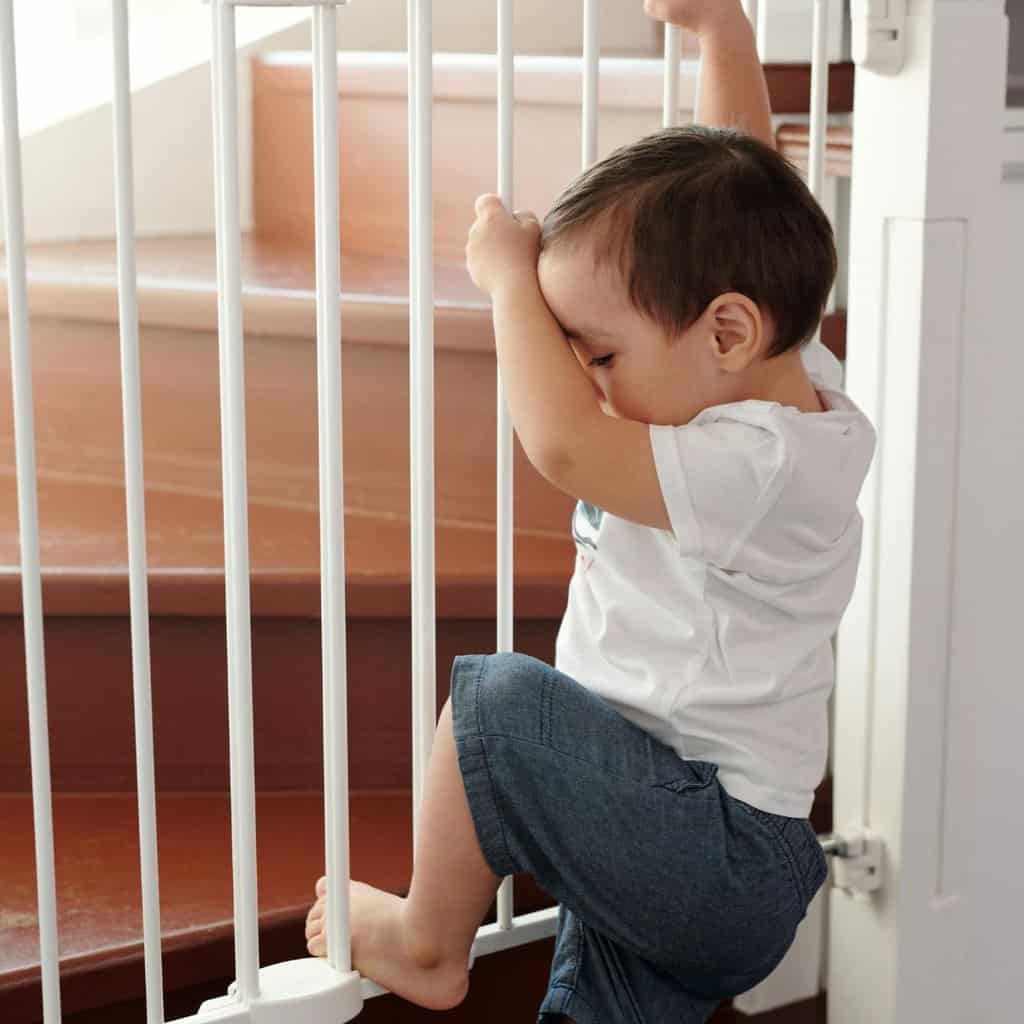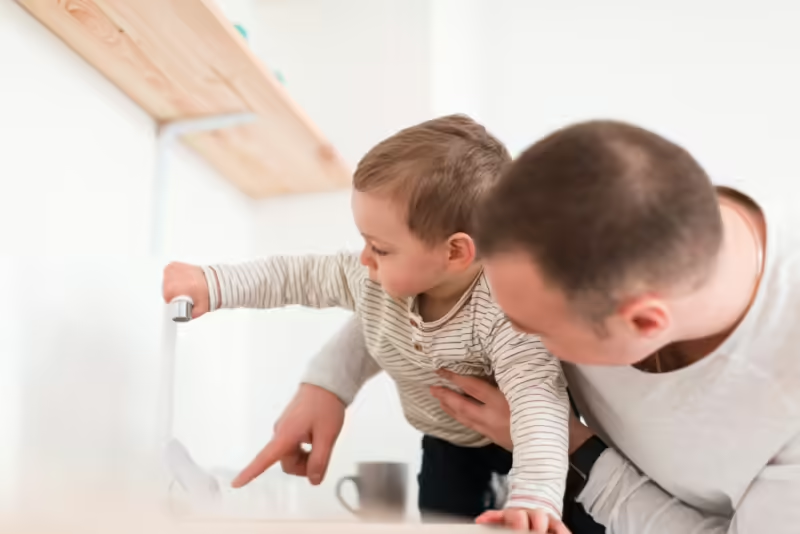Creating a safe environment for children is a fundamental concern for every parent, and understanding how to effectively childproof your home is a crucial first step. With their insatiable curiosity, children are naturally drawn to explore every nook and cranny, making it essential to identify and mitigate common household hazards. From sharp objects and toxic cleaning supplies to unsecured furniture, each poses a unique risk.
This guide will provide practical tips and strategies to help you safeguard your home, ensuring peace of mind and safety for your little ones. Whether you’re a new parent or looking to refresh your childproofing measures, these insights are designed to inspire confidence and promote a proactive approach to home safety.
Identifying Common Household Hazards
Before embarking on the journey to childproof your home, it’s important to first identify the common household hazards that can pose risks to your children. Understanding these dangers is the foundation for creating a safe and secure environment. This section will guide you through recognizing and addressing these potential threats, ensuring that you’re well-equipped to protect your little ones from harm.
Recognizing Sharp Objects Risks
Sharp objects are a prevalent hazard in many homes, posing potential harm to curious children. Items such as knives, scissors, and even certain toys can lead to serious injuries if left within reach. It’s vital to store sharp objects safely, ideally in locked drawers or cabinets. Consider installing childproof locks on kitchen drawers and bathroom cabinets to prevent access. Additionally, be mindful of items like broken glass or any sharp-edged furniture. Regularly inspect your home for such hazards. When in doubt, consult a childrens doctor or search for a pediatrician near you, as they can offer tailored advice on childproofing based on your child’s age. By taking proactive steps to secure sharp objects, you create a safer environment that reduces the risk of accidents. This simple yet effective measure is crucial in the broader strategy of safeguarding your home.
Understanding Toxic Substances Dangers
Household cleaning supplies, medications, and certain plants can pose significant risks to children if ingested or handled improperly. These toxic substances are often brightly colored or sweet-smelling, increasing their appeal to young explorers. To mitigate these dangers, ensure all hazardous materials are stored in high, out-of-reach locations or in cabinets secured with childproof locks. Use labels to clearly identify toxic products and educate older children about their dangers. Regularly check for expired medications and dispose of them safely. If concerns about exposure arise, consider consulting an allergist near me for guidance on preventing allergic reactions. Additionally, maintaining a list of emergency contacts, including the poison control center and your pediatrician, is crucial. By understanding and addressing these risks, you minimize potential health hazards and contribute to a safer home environment, fostering peace of mind for parents and caregivers alike.
Unsecured Furniture Hazards
Unsecured furniture, such as bookshelves, dressers, and televisions, can pose serious tipping risks, especially as children begin to climb and explore their surroundings. These items can topple over, causing injuries that range from minor bruises to severe trauma. To prevent such accidents, anchor heavy furniture to walls using brackets or straps. Always place heavier items on lower shelves to maintain stability and reduce the risk of toppling. Verify that your TV stands are sturdy and, if possible, mount televisions on walls. Regularly check the stability of furniture and make adjustments as needed. For additional safety measures, you can consult a children’s doctor or search for a pediatrician near me for specific recommendations tailored to your home environment. By securing furniture, you create a safer living space that allows children to explore and play without the looming threat of tipping hazards. This proactive approach significantly reduces the risk of injury, promoting a safer home environment.
Practical Tips for Childproofing
Childproofing your home involves implementing practical measures that help prevent accidents and ensure the well-being of your children. These strategies focus on addressing specific hazards and creating a safer environment through thoughtful adjustments and installations. In this section, we’ll explore essential tips and tools that make your living space more secure, allowing your children to explore with peace of mind.
Securing Sharp Edges and Corners
Sharp edges and corners on furniture such as coffee tables, countertops, and bed frames can lead to painful bumps and cuts for young children. To minimize these risks, consider installing corner guards and edge bumpers made of rubber or soft plastic. These protective accessories are easy to apply and can significantly reduce the severity of injuries. Be diligent in inspecting your home for any protruding edges that might be at a child’s eye level or within reach. Regularly replace worn-out bumpers to ensure continued protection. Additionally, rearranging furniture to create more open spaces can decrease the likelihood of collisions. For further personalized advice on creating a safe home environment, consult resources from your pediatrician or search for a pediatrician near me. Implementing these measures not only safeguards your child but also provides peace of mind, knowing you’ve taken proactive steps to prevent common household accidents.
Safe Storage for Hazardous Substances
Storing hazardous substances safely is paramount in protecting children from potential poisoning and injuries. Cleaning supplies, medications, and even some personal care products should be kept in locked cabinets or high shelves out of children’s reach. Use child-resistant packaging whenever available and make it a habit to re-secure lids tightly after use. Additionally, consider labeling all containers clearly to avoid any confusion. For a more comprehensive safety strategy, you might want to consult an allergist near me to ensure you’re also protecting against potential allergens. Regularly audit your storage areas to ensure that no hazardous materials are left accessible. Keep emergency numbers, including that of your pediatrician, easily accessible in case of accidental exposure. By implementing strict storage protocols, you create a safer living environment that minimizes the risk of accidental ingestion or contact with dangerous substances, thereby promoting overall home safety.
Anchoring Furniture and Appliances
Anchoring furniture and appliances is a critical step in preventing tipping accidents that can cause severe injuries to children. Heavy items such as bookshelves, dressers, and televisions should be securely fastened to walls using brackets, straps, or wall anchors. This prevents them from toppling over if a child attempts to climb or pull on them. Ensure that all anchoring devices are installed correctly and periodically check their stability. For added security, consider placing heavier items on lower shelves to maintain a low center of gravity. Additionally, be cautious with kitchen appliances and consider securing them if they pose a tipping risk. Consulting a children’s doctor or searching for a pediatrician near me can provide you with additional insights tailored to your household needs. By taking these precautions, you create a safer environment for your children, allowing them to explore their surroundings without the fear of dangerous tipping hazards.
Essential Tools for Childproofing
Ensuring your home is a safe environment for children involves more than just making basic adjustments; it requires the strategic implementation of essential tools that prevent common household accidents. In this section, we’ll explore must-have safety devices that offer peace of mind by keeping your little ones protected from potential dangers as they explore their surroundings.
Baby Gates and Safety Locks
Baby gates and safety locks are indispensable tools in the journey toward creating a safe home environment for your children. Baby gates are particularly useful for blocking off staircases, kitchens, or any rooms that may pose potential hazards. When choosing a baby gate, ensure it is sturdy, fits the intended space securely, and is easy for adults to operate while being challenging for young children to bypass. Safety locks are equally crucial in keeping curious hands away from dangerous items. Use them on cabinets, drawers, and appliances to prevent access to harmful substances and sharp objects. Regularly inspect these tools to ensure they remain functional and effective. For comprehensive safety guidance tailored to your home, consider consulting your pediatrician or searching for a pediatrician near me. By utilizing baby gates and safety locks, you establish a controlled environment where children can safely explore, minimizing the risk of accidents and injuries.
Outlet Covers and Cord Organizers
Outlet covers and cord organizers play a vital role in preventing electrical accidents and reducing tripping hazards within your home. Outlets are often at an accessible height for children, making them a significant safety risk. Installing outlet covers or sliding plate covers can effectively block little fingers from inserting objects into sockets. Make sure to use covers that are secure and cannot be easily removed by children. Cord organizers, on the other hand, help to tidy up the sprawling wires from electronic devices, minimizing the risk of your child pulling on them or becoming entangled. Use cord shorteners or clips to keep cords off the floor and out of reach. Regularly check the condition of these safety tools to ensure they are intact and effective. For additional home safety tips, consider seeking advice from a pediatrician near me. Implementing these measures significantly enhances the safety of your home, providing a more secure environment for children.
Window Guards and Safety Straps
Window guards and safety straps are essential for preventing falls and ensuring that windows and other openings are secure. Window guards are metal or plastic bars installed over windows to prevent children from falling out while still allowing for ventilation. Ensure that these guards are securely fastened and meet safety standards, as poorly installed guards can be just as dangerous. Safety straps, on the other hand, can be used to secure heavy items like televisions, dressers, and bookshelves to the wall, reducing the risk of tipping. These straps are particularly useful in homes with active children who may attempt to climb or pull on furniture. Regularly inspect the integrity of these guards and straps to ensure they remain effective. For more personalized safety recommendations, you might consult a children’s doctor or search for a pediatrician near me. By installing window guards and safety straps, you significantly enhance the safety of your home, providing a more secure environment for your children.
Final Thoughts
Childproofing your home is an ongoing process that adapts as your children grow and their abilities change. By recognizing potential hazards and implementing practical safety measures, you create a nurturing environment that encourages exploration while minimizing risks. Remember, vigilance and routine checks are key to maintaining a child-safe home; regularly reassess your childproofing efforts to accommodate any new changes or challenges.
In addition, staying informed about the latest child safety tips and tools can further enhance your home’s safety. Engage with other parents, experts, or community groups to share experiences and insights. By fostering a proactive mindset towards home safety, you empower yourself to make informed decisions that protect your children.
Ultimately, childproofing is about peace of mind—knowing that your home is a secure place where your children can thrive. Embrace the journey with confidence, knowing that every effort contributes to a safer and happier environment for your family.



